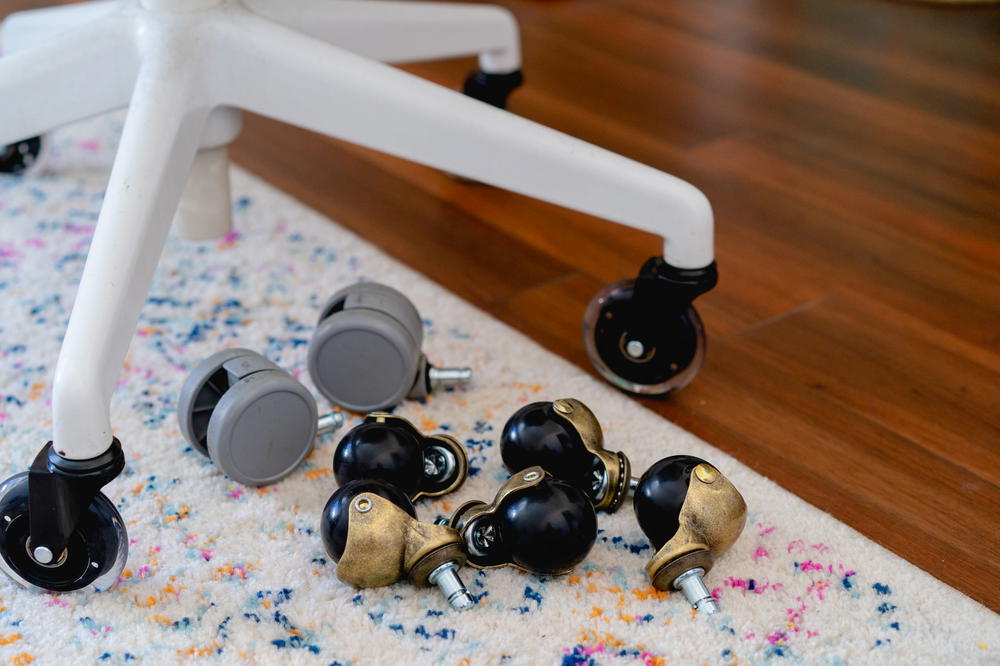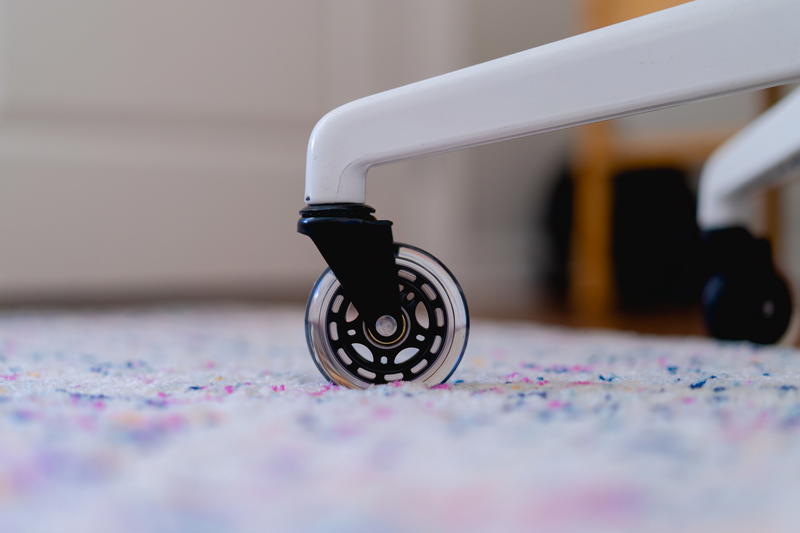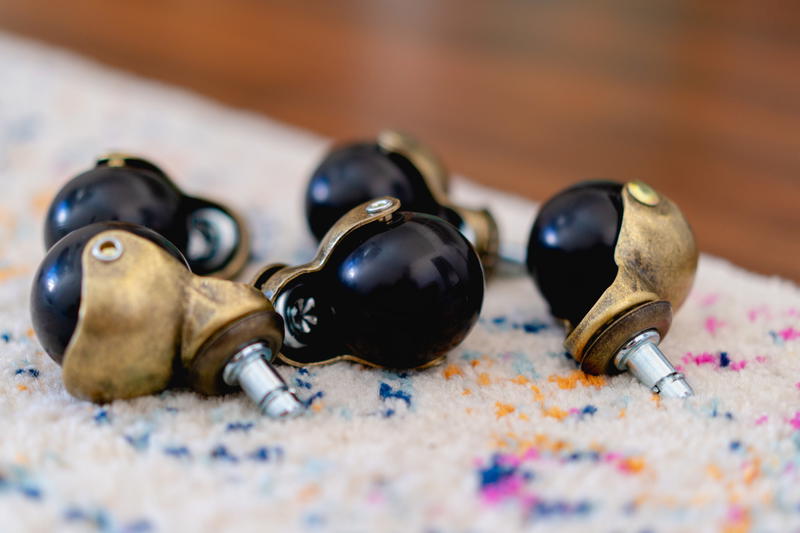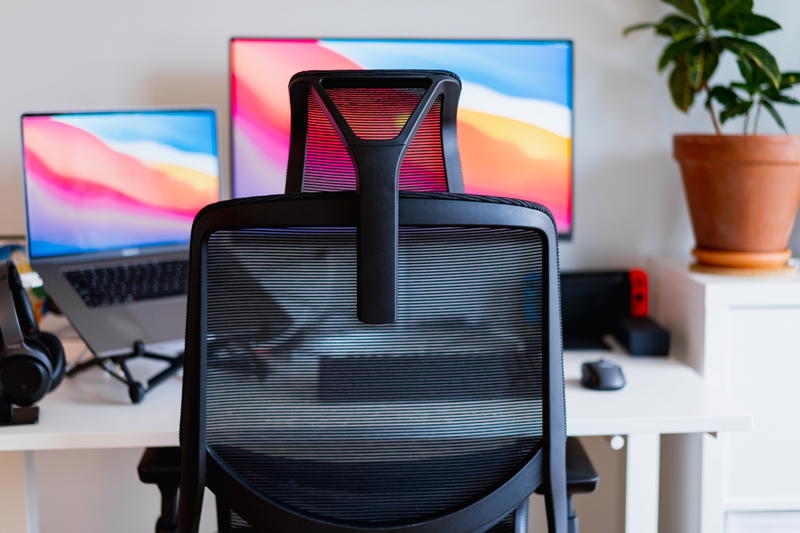How to Stop Your Desk Chair from Rolling

How do you prevent a rolling desk chair from sliding around your home office? We found the best solutions for stopping your desk chair from rolling. Here are our best tips.
This article may contain affiliate links. We earn a small commissions when you purchase via those links — and it's free for you. It's only us (Becca & Dan) working on this website, so we value your support! Read our privacy policy and learn more about us.
If you’re like me and have uneven floors, having a desk chair with wheels in your home office you set up can be an adventure. I find myself constantly readjusting myself on my chair! My chair rolls because my floors are uneven and there isn’t enough friction between the chair wheels and the floor.
Because I have done a lot of research on how to fix this, I wanted to share my ideas with you on how to fix your desk chair from rolling while you are sitting at your desk.
Quick fixes for different floor types
The type of flooring you have in your home office makes a huge difference in how your office chair behaves. Hardwood floors are the worst offenders for rolling chairs. Or at least, I’ve really only had issues with my hardwood floors.
Carpet provides the most natural resistance, but depending on the pile type you have, it still could be an issue. Here’s what works best for each surface:
Hardwood/LVP floors
These are the most slick for office chairs. The easiest way to get around rolling on hardwood floors is to have an area rug. Pick something that fits your space and design. Both round or square area rugs will work! You can also replace your casters (basically pop off the wheels) and that works great too.
Tile floors
Similar to hardwood, tile is very smooth and slippery. The difference is that tile floors often have grooves when you have a tile transition. I’ve noticed that those grooves often stop the chair from rolling. But if you’re still sliding around, an area rug also works well here.
Carpet
This is actually the easiest surface to work with. None of my home offices have had carpet. But I have been in offices with low pile carpet and it’s moved around a bit, but not to the extent of hardwood or tile.
In this case, you might actually have the opposite effect, where your wheels don’t move. In this case, a under the desk mat might be your best bet.
Uneven floors
This is my challenge! Uneven floors make any rolling chair unpredictable. My first home office had very uneven floors. There might have been a 2 or 3 inch difference from 1 side of the room to the other!
Replacing the wheels for stationary casters was really the only thing that worked. You could also look into a thick area rug to provide a ton of resistance under your wheels.
Troubleshooting common problems
Sometimes the issue isn’t just that your chair rolls too much - it’s that it behaves in unexpected ways. Here are the most common problems I’ve encountered and how to fix them:
Your chair rolls backward when you lean back
This usually happens because your chair’s center of gravity is off. Or this could happen because your floors are uneven. If you don’t know if your floors are uneven, you can put a ball or a marble at your chair and see which way it rolls.
You can potentially rearrange your desk so your chair is at a more level surface. You can also look into a heavier chair.
Wheels don’t roll at all (they’re stuck)
This is often caused by hair, dust or debris wrapped around the wheel. Flip your chair over and inspect your wheels. You might be surprised how dirty they are! You can look into getting a robot vacuum to help you clean up with no effort.
This actually happened to my stroller and it was such a simple fix to clean out the wheels. It’s the same for chair wheels.
Chair only rolls in one direction
This usually means one or more wheels are damaged or the floor is uneven in that spot. Check if any wheels look cracked or bent. You can replace them if needed. If you’re replacing 1, you might as well replace them all because they’re usually sold in a 4 or 5 pack.
Chair rolls when you don’t want it to, but won’t roll when you do
This is the most frustrating! I’ve found that if your wheels are too small, this might happen. Replacing the wheels is your best bet! I like rollerblade wheels but there are a ton of options out there.
Wheels make noise or feel wobbly
This typically means the wheel bearings are worn out or the wheels are loose. You can try tightening the wheels if your wheels allow that. Your wheels could be cheap or old. Replacing is your best bet here too.
Ditch the wheels on your rolling desk chair
Almost every desk chair with wheels has the ability for you to remove the wheels. You can flip the chair on its side or back and pop off the wheels.
They can sometimes be stuck on, so finding a few different angles to pull from is sometimes needed. You might also have luck applying a thin layer of WD-40 (or some neutral cooking oil) if it really won’t budge.
These fixed stationary casters will be exactly what you are looking for. You’ll lose the ability to slide around, but you’ll stay put in your chair!
Upgrade your chair wheels
If you want to keep your chair mobile but reduce unwanted rolling, upgrading your wheels is often the best solution. I’ve tested several options and here’s what works:
Rollerblade-style wheels. These provide the best grip and control. I added these rollerblade wheels to my desk chair and they work great on both carpet and hard floors.

Watch this video to see how these work and how to install them:
I also tested these roller ball style wheels. I liked the rollerblade ones better, and they seemed to fit the chair slightly better in my case.

If you decide to upgrade your wheels, make sure you get 7/16” x 7/8”. That is the standard size for fitting in most home office chairs.
Use a chair mat
If you have carpet that’s too thick for your wheels to roll properly, or you want a more professional look than an area rug, a chair mat is your best bet. These thick plastic mats grip the floor underneath and provide a smooth surface for your wheels to roll on.
Use an under-desk footrest
An under-desk footrest can help stabilize your chair by giving your feet a fixed position to brace against. This reduces unwanted rolling while keeping your chair mobile for when you need to move around.
It’s also great for ergonomics and comfort while working at home.
Add locking casters
Some chairs come with locking casters (little switches under the wheels that lock them in place). If your chair doesn’t have them, you can replace your wheels with locking casters that let you lock the chair when you need it stationary.
Upgrade your desk chair
Heavier chairs are less likely to roll than lightweight ones. If you’re using a small, lightweight chair, consider upgrading to something more substantial. I’ve been using this chair from FlexiSpot and haven’t noticed any rolling issues.

Hopefully, this article has helped you find a solution for your rolling office chair! The key is matching the right solution to your specific floor type and needs.
I like keeping wheels on my chair because I often transition my desk from sitting to standing, but the solutions above should help you control the unwanted rolling while maintaining the mobility you need.

